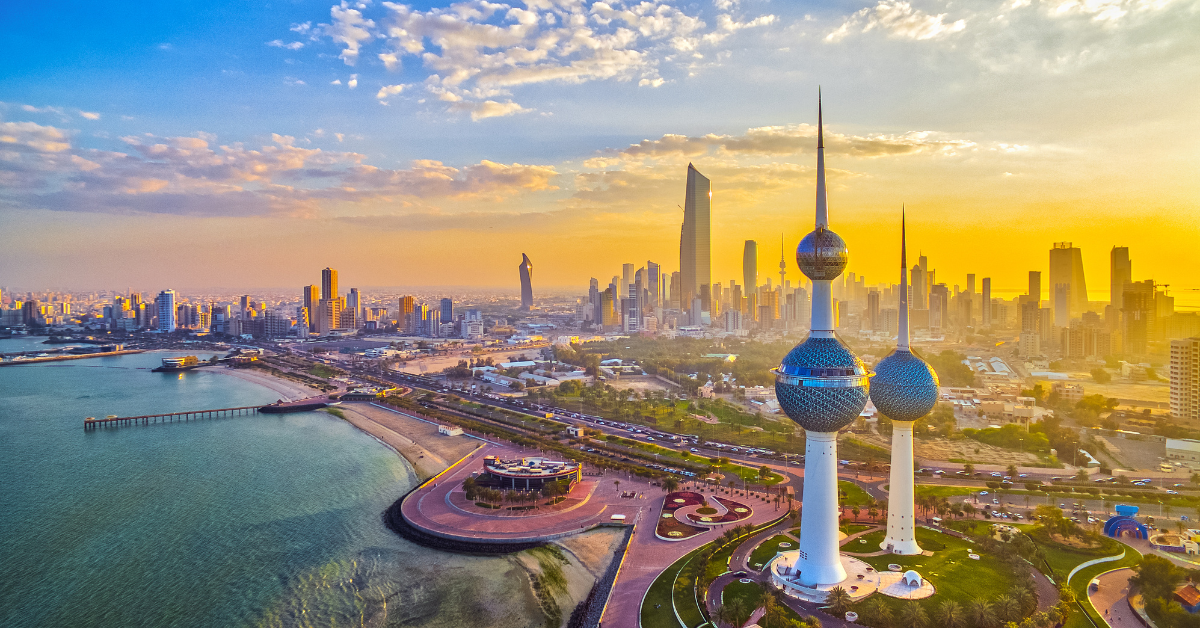Kuwait City, the capital of Kuwait, is almost never written in kanji. While the country’s name can sometimes be transliterated as 「科威特」, this applies only to the nation, not the city. For Japanese people, the city carries multiple images, such as “a wealthy oil-rich capital,” “a city of Islamic culture,” and “a place shaped by history.” This article explores these perceptions, as well as how sports play a role in shaping the image of Kuwait City.
Does Kuwait City Have a Kanji Representation?
In Arabic, Kuwait City is called “مدينة الكويت (Madīnat al-Kuwayt).” In Japanese, it is almost always written in katakana as “クウェートシティ.”
The country name “Kuwait” has been transliterated into kanji as 「科威特」 in Chinese and other Chinese-character contexts. However, this is a representation of the nation, not of the city itself. For this reason, Kuwait City is consistently written in katakana in Japanese.
| Writing Method | Where It Is Used | Notes |
|---|---|---|
| クウェートシティ (Kuwait City) | Japanese maps, media | The most common representation |
| مدينة الكويت (Madīnat al-Kuwayt) | Official Arabic name | Means “City of Kuwait” |
| 科威特 | Chinese transliteration | Refers to the nation, not the city |
Attempting to render the city’s name in kanji can cause confusion, so official Japanese documents and news consistently use katakana.
Economic Images Japanese People Associate with Kuwait City
For Japanese people, Kuwait is most strongly associated with oil. As a major oil-producing nation, Kuwait City is often described with images such as “wealth,” “skyscrapers,” and “a modern city.” For those who lived through the Gulf War, there is also the perception of “a city rebuilt after conflict.” Thus, Kuwait City is viewed as a blend of economic prosperity and historical resilience.
| Keyword | Japanese Perception | Reality |
|---|---|---|
| Oil | A wealthy oil nation | Social welfare supported by oil revenues |
| Skyscrapers | A modern city | Financial institutions and shopping centers concentrated downtown |
| Post-war recovery | A city that overcame destruction | Urban infrastructure rebuilt and modernized |
Cultural Perceptions of Kuwait City
Japanese people often see Kuwait City as “a city of Islamic culture.” Media coverage of women’s dress codes and religious practices reinforces impressions such as “mosques,” “prayer times,” and “a desert city.”
Kuwait City also symbolizes the coexistence of tradition and modernity. Desert landscapes stand beside glass-covered towers, and camel racing exists alongside luxury shopping malls. This juxtaposition makes the city appear highly exotic to Japanese visitors.
| Cultural Element | Japanese Impression | Actual Characteristics |
|---|---|---|
| Religion | Strict Islamic culture | City pauses during prayer times |
| Architecture | A city full of mosques | Blend of traditional and modern structures |
| Lifestyle | Very different from Japan | Public rules are stricter, but daily life is orderly |
Kuwait City Through the Lens of Sports
Kuwait City also has a reputation as a sports hub. Soccer is the most popular sport in the country, with national league games and international matches drawing passionate crowds.
Fueled by oil wealth, stadiums have been built to international standards, serving as venues for both local and regional competitions. Basketball and tennis are also popular, and the city sometimes hosts Asian and Middle Eastern sporting events.
| Sport | In Kuwait City | Japanese Perception |
|---|---|---|
| Soccer | National sport with modern stadiums | Soccer is passionately followed even in the desert |
| Basketball | Popular in schools and clubs | Seen as a symbol of modern urban life |
| Martial arts | Growing popularity among youth | Surprisingly active despite desert setting |
Sports in Kuwait City function as more than entertainment. They promote international exchange and tourism, and for Japanese visitors, attending a match offers new insights into the city’s identity.
Perceptions of Safety and Living Conditions
Due to memories of the Gulf War, some Japanese people still carry the vague impression that “the Middle East = dangerous.” However, Kuwait City today is relatively stable and safe. Many Japanese expatriates and businesspeople live there, often reporting that the city feels “surprisingly safe.”
That said, cultural and religious norms must be respected. Behaving with the same mindset as in Japan may cause friction, so awareness of local rules is essential.
| Aspect | Japanese Preconception | Reality |
|---|---|---|
| Security | The Middle East is unstable | Kuwait is relatively stable |
| Daily life | Difficult or inconvenient | Infrastructure is well developed and living is comfortable |
| Cultural rules | Overly strict | Certain public restrictions exist, but everyday life is manageable |
Conclusion
Kuwait City has no kanji representation and is always written in katakana in Japanese. The transliteration 「科威特」 refers only to the country and not the city.
Japanese people view Kuwait City as “a wealthy oil-rich capital,” “a city of Islamic culture,” and “a city shaped by the Gulf War.” Additionally, from the perspective of sports, Kuwait City is also known as “a soccer-loving city.” These layers together create a richer understanding of the city beyond the stereotype of “just another Middle Eastern city.”
By learning the correct background, people can see Kuwait City as a multi-faceted capital with economic, cultural, and social dimensions that extend far beyond its common stereotypes.






